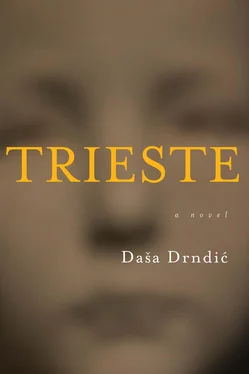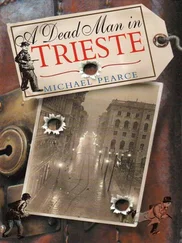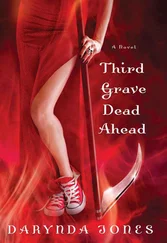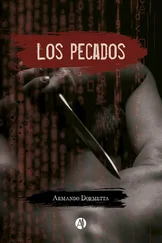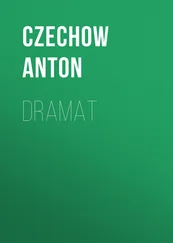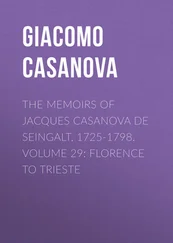I don’t understand, the woman says.
I’m not surprised, says Haya and walks on. Haya walks slowly. Her step is not unsteady. Haya is a hale old woman.
Haya walks and hums. The noise levels are mounting in Gorizia. Gorizia is loud, Haya says. Whenever she goes out, Haya senses more noise. The noise sits on her brow and weighs down on her head. Gorizia is full of exhaust fumes today. There are new cafés. Haya goes to the park. The greenery at the park is intense; it soothes her eyes. Haya sings to outnoise the noise rolling down the Corso. If she could, if she were younger, she’d chase the noise; she’d say to it Shoo! or maybe she’d say to it Come, lie on my bosom , because there is too much quiet in her breast. She is not younger. What can she do about that? Haya hums. How is it that Haya hums when she isn’t particularly happy? Generally when they sing people feel glad. They probably first feel glad, then they think, Ah, I’m filled with gladness , and then they sing. Is that it? But what if the songs people sing when they are glad, what if these songs are sad? It must be that they are moved then by a sorrow that mingles with their happiness. As with mathematics. Formulae. Planes interweave. Planes of sorrow and happiness melt to zero, to nothing. What is going on? Haya says, surprised. Nothing is coming out of my breast, she says. A big immobility is crouching inside. By the time she died Ada could no longer sing; something had happened to her voice box. When she tried to sing, though seldom, as she neared death, she could only squawk. She’d look at Haya and say, Something’s broken. She died wearing a yellow, short-sleeved blouse with Richelieu embroidery and red wine stains that had gone dark blue. A beautiful blouse. This is the blouse my mother wore when she brought the soldiers their macaroons, Ada told Haya, then she died. In that hospital. In Dr Basaglia’s ward. Haya did not bury Ada at Valdirosa. When Ada died the Valley of the Roses was in another country. Haya put Ada in a little niche, here, at Gorizia cemetery. There are poppies with silk petals in front of the niche. Now that they are sewing Gorizia back together again, Haya might be able to move Ada. She won’t. There is nothing left to move. Ada is now little more than a handful. It seems silly to move little objects, little things. Little things can be carried in the pocket; they go with us.
The weather is getting warmer.
A small white cat with one eye and no nose creeps by Haya’s feet at the Parco della Rimembranza. And breathes its last. Here, right at Haya’s feet. Deterioration lies everywhere, Haya says. Haya looks a little at the dead kitten, a little at her shoes. My shoes are so unsightly , she says. I won’t buy shoes with round shoelaces any more. Round shoelaces always come undone. I could play bridge. With whom?
Haya closes her eyes. There on the bench at the Parco della Rimembranza beneath her eyelids surfaces the large eye of an ox, a wrinkled eye, a horrible, open eye. There is no person who can gaze like that, that way, like an ox. The huge eye watches Haya from the inside. It draws itself in, squints, then opens even more. How unpleasant, says Haya and gets up. What will I do with my time? wonders Haya, then sits again. I am dragging time along like a dog on a leash. This is becoming an effort.
A woman walks by with a dog. The dog wags its tail. It wants to go to Haya. In a high voice the woman says, Be good! DON’T bother the lady. The woman has narrow hips. Women with narrow hips have more trouble giving birth. Haya has broad hips. Mothers talk to their children, especially in parks where the children like to explore, they tell them, DON’T bother the lady! Children do not bother Haya. Even dogs do not bother her. But the people in charge boss around children and dogs— DON’T be a bother! In general, they speak with dogs and children the same way. That’s a no-no, nasty! they tell them. Maybe I should go mushrooming? wonders Haya. Collect medicinal herbs, brew herbal teas?
In Berlin once, many years before, Haya got to know Jarmušek, a painter, who brewed her berry teas. Red teas and purple teas, nearly black. In Berlin that year, at a flea market, Haya bought an old doll whose eyes wouldn’t close. Jarmušek told her, Dolls keep secrets even when their eyes are open. Then Haya and Jarmušek went to Nuremberg. Let’s go to Nuremberg, Jarmušek said. Nuremberg is the city of toys. So Haya and Jarmušek went to Nuremberg in 1968 and looked at the toys, though they were already adults, over forty.
While in Nuremberg Haya studies the city. It is a green city; it has a lot of greenery. In Nuremberg Haya and Jarmušek discover stories about dolls. Nuremberg is an old city, almost a thousand years old. For seven hundred years people have been making dolls in Nuremberg; first little ones, then big ones. The little dolls are old, they are white clay dolls the size of a finger, they are little women and little men, little horsemen, little monks and remarkably little babies, who are little anyway. I would like to have a doll like that , says Haya, a little white baby. At the exhibition of dolls and toys someone says, Only Strasbourg dolls from the thirteenth century are older than the Nuremberg dolls. At the doll exhibition Haya and Jarmušek listen to the story of Nuremberg doll-making.
I don’t know whether we need this, this history, Haya says.
There are terrible dolls, Jarmušek says.
That is how Haya and Jarmušek learn that more than six hundred years before, two doll-makers — two Dockenmacher —live in Nuremberg, and that wooden dolls follow the clay dolls, and later there are dolls made of alabaster, wax, rags; there are colourful dolls and dolls dressed in the fashions of the day. They learn that toy production in general follows the making of dolls; that Georg Hieronimus Bestelmeier, a Nuremberg merchant and shop owner in the centre of the Old City, in his catalogue for 1798 lists 8,000 items produced in the Nuremberg workshops, including rocking horses, wooden blocks, doll’s houses completely furnished, kitchens for dolls with all the equipment, miniature shops, an array of pewter animals and other wind-up figures, children’s musical instruments and all sorts of other wonders.
They are making little worlds of the dead, whispers Haya to Jarmušek.
Worlds for fun. Worlds people play with, Jarmušek says.
In the eighteenth century the so-called Papierdockenmacher make dolls, animals, papier-mâché masks, or only body parts, which are then glued or sewn onto a stuffed leather torso. In the second half of the eighteenth century the Hilpert, Ammon, Heinrichen, Allgeyer and Lorenz families dictate the production of pewter dolls. Shops and children’s stores are inundated with an exotic (pewter) animal world, with mythological characters and medieval knights. In the nineteenth and twentieth centuries the Trix, Schucho, Bub, Fleischmann, Arnold, Plank, Schoenner and Bing companies become synonymous with the desirable toy. The number of people involved in designing and producing toys keeps growing. While, for example, 1,366 people work on making toys in 1895, ten years later there are more than 8,000 of them, and 243 companies or small toy factories are at work in Nuremberg in 1914. And so, the Nuremberg world of imagination grows and grows and travels everywhere, especially to the United States. Toys feed Nuremberg and Nuremberg feeds on toys.
Then comes World War One, and with World War One begins the quiet demise of Nuremberg toys. Instead of toys, weapons are produced. Instead of little varnished, mechanical cars, big olive-drab caterpillar tanks are produced. Instead of swift electric trains that circle through mountain landscapes in elegant salons and spacious children’s bedrooms, the hit is Big Bertha. Then, from 1933 on, Jews, the majority owners of the factories begin to disappear from Nuremberg at a dizzying rate, so the toys disappear, too. In the summer of 1943 Hitler announces a ban on manufacturing toys, all toys. Hitler advises children to Play at the arts of combat and sing war songs, marches.
Читать дальше
